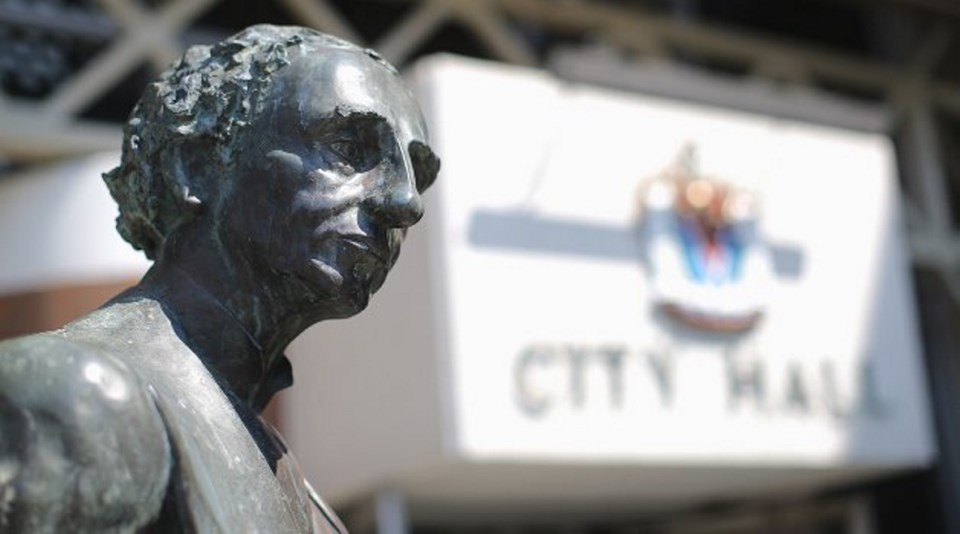A funny thing happened on my summer vacation away from Victoria. While I was meandering along the lakeside roads of the West Kootenay, a small revolution occurred.
There has been more ink spilled over the removal of Sir John A. Macdonald’s statue than there has been unseemly reminders of the summer seagull splashed across our fair city. If only the stain of much of the ink would clean off as easily.
I have said on more than one occasion that the statue should be removed, preferably 500 metres west, to stand proudly at the bottom of Victoria’s Inner Harbour, which, to my knowledge, has a deficit of Canadiana. What better way to spur the nascent aqua-tourism industry of the Inner Harbour than to place Sir John A. beneath the waves?
I am sure the Chamber of Commerce would agree — location, location, location.
While I was surprised at the timing of the removal, long after the city’s 2017 Year of Reconciliation, and absolutely nowhere near April Fool’s Day, I was happy, and really how could I not be? To see ropes affixed round Macdonald’s statue is an image that will hang around my mind for some time.
The truth of the matter is that the statue is not about really about history, as many have argued.
The more Macdonald’s expressly racist record is retold, the more his defenders claim he was just of the times. It is telling that the voices who have no trouble explaining how exceptional Macdonald was as a politician, nation-builder, orator and leader predictably, and culpably, run for the cover of “he was just of the times” when his undeniably unscrupulous and racist record is mentioned.
He can’t be Mr. Exceptional on the one hand and Buddy McNobody on the other hand, especially when the balance of that fulcrum is his racism. That would be like saying that Burton Cummings’ Guess Who mullet was just of the times. Sure, it might be of the times, but it was the quintessential mullet of the era and it spurred countless others, many that endure today.
Mullets aside, the statue is not simply a work of art, either, as the sculptor and others would have it understood.
An imposing eight-foot statue of Macdonald standing watch at the entrance of Victoria City Hall is not some quaint picture postcard art piece that brings everyone together from the cusp of the gallows. It is a haunting, imposing and judgmental visage that represents one thing and one thing only: power.
That is what the removal of Macdonald’s statute truly represents: power, specifically a shift of power.
Sure, some settlers will bleat on sanctimoniously about the loss of culture and history that the statue’s removal represents. C’mon folks. Get real. You cannot find a city more perfectly colonially constructed than Victoria with its Begbie Street hangups and Rattenbury fingerprints.
It’s a cornucopia of colonial history as frighteningly uniform as it is banal. But let’s be honest, Macdonald’s statue removal is classic Macdonald politics.
However the internal discussion of the city family went (the bizarrely termed committee that ostensibly proved the catalyst for the removal) the political execution of the removal by city council led by Mayor Lisa Helps is classic Macdonald politics.
Hell, if “Old Tomorrow” were here in the flesh today, he’d have to tip his top hat to the political trapeze that Helps danced on the issue, going from committee to council to political announcement on her own re-election website. If that ain’t kombucha-barrel politics, I don’t know what is.
Personally, I am happy to see the statue go. Macdonald himself issued the order that sent the Northwest Mounted Police to Ktunaxa territory and forced our community from what is now Cranbrook to our reserve, bound for a few generations of residential school, malnutrition and cultural genocide.
While the removal of the statue does little to restore our community economically, politically or culturally, that will come only with the reconciliation of actual land to our nation, and, trust me folks, that is indeed coming. It does make walking into city hall a much less hostile experience.
It clears the view of Dylan Thomas’s stunning work Releasing the Light, which is on the Pandora Avenue wall of city hall. And that, my friends, is a view this city desperately needs much more of.
Troy Sebastian/nupqu ʔa·kǂam̓ is a Ktunaxa writer from ʔaq’am living in Lekwungen territory.



